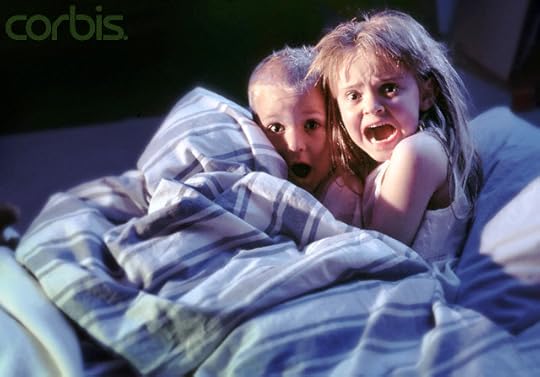How much is too much for kids?
One of the writing blogs I follow recently published an insightful article about how much ‘grit’ kids can handle in their literature.
I spent a good while composing and posting my thoughts on the subject, so I thought I’d share it here as well:
Many recent YA contemporary novels, if made into a movie (with dialogue and graphic content intact) would be rated NC-17 or even higher.
WIs it different to read through dozens of ‘F’ words? Why do we have the move rating system in the first place? (clue: it’s not because a bunch of outdated prudes want to keep kids from knowing the truth about life.)
It’s no secret that the bar for protecting children from “realistic” content has dropped and shows no sign of slowing. Many would rather congratulate themkselves on finally achieving free speech and liberating young minds than face what this “realistic” conditioning is actually doing to these liberated minds.
Until about their twenties, children’s brains are not fully developed. The last thing to develop is the frontal lobe (which helps with determining what it socially acceptable.) Funnily enough, a stroke in this area will release foul language.
So big deal, right? Teenage swearing and sex is a part of growing up.
What about bringing guns to school? What about murder? Now, I don’t believe that kids who read Forgive Me Mr. Peacock will set out to murder their father. And I don’t believe kids who read bad language in books will necessarily began to speak that way themselves.
The problem is that with their immature frontal lobes, they’re still trying to figure out what is right and wrong, healthy ways to deal with problems, and what is normal.
Although most gritty books have some sort of moral lesson at the end that the kids may or may not pick up on or agree with, the more sure (conscious or subconsious) lesson they are getting through this deluge of realism is that it’s normal to sleep with your classmates, to use the F (or C) word in everyday conversation, to use violence to deal with your problems, to abuse others, to commit suicide, to shoot up your school as a revenge for the way you’ve been treated.
Adults reading this may think me absurd. Whether they believe underage drinking is the norm among teens (It’s not, only a small percentage do) or that no one actually graduates high school a virgin, adults understand that the other problems I mentioned are certainly not normal or even common.
But adults know this because they have a fully developed frontal lobe. They (most of them) understand how to seperate their morals and decision making from what they read in their free time.
It is scientifically documented that kids cannot. So before you call me a censoring prude, or a blue-nosed a**hole (as did Cory Doctorow) ask yourself if you want your teenage daughter to subconsiously think cutting herself is a common, legitimate way to deal with her emotional problems.
What adults read is of no concern to me. (Well, that’s not entirely true, pornographic content leads to violent sex crimes, and trafficking of children, but that’s a debate for another day.) But is it realistic for us to ask teens to keep their language and behavior clean at school, while we fill their books with deviant behavior? No wonder they’re confused.
Yes, kids can easily get their hands on adult novels, but when you package and market a book specifically for young minds, you’re sending them a very clear idea of what is acceptable. Children should learn about the problems of real life eventually (when they are emotionally mature), but from a parent or responsible adult and not glamorized as entertainment.
Share this:














